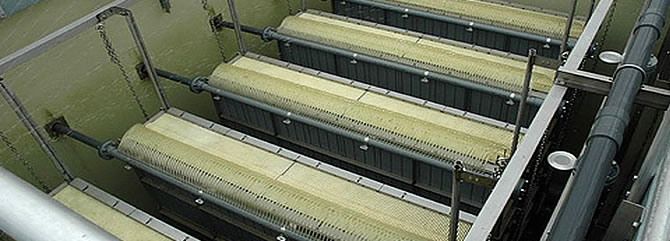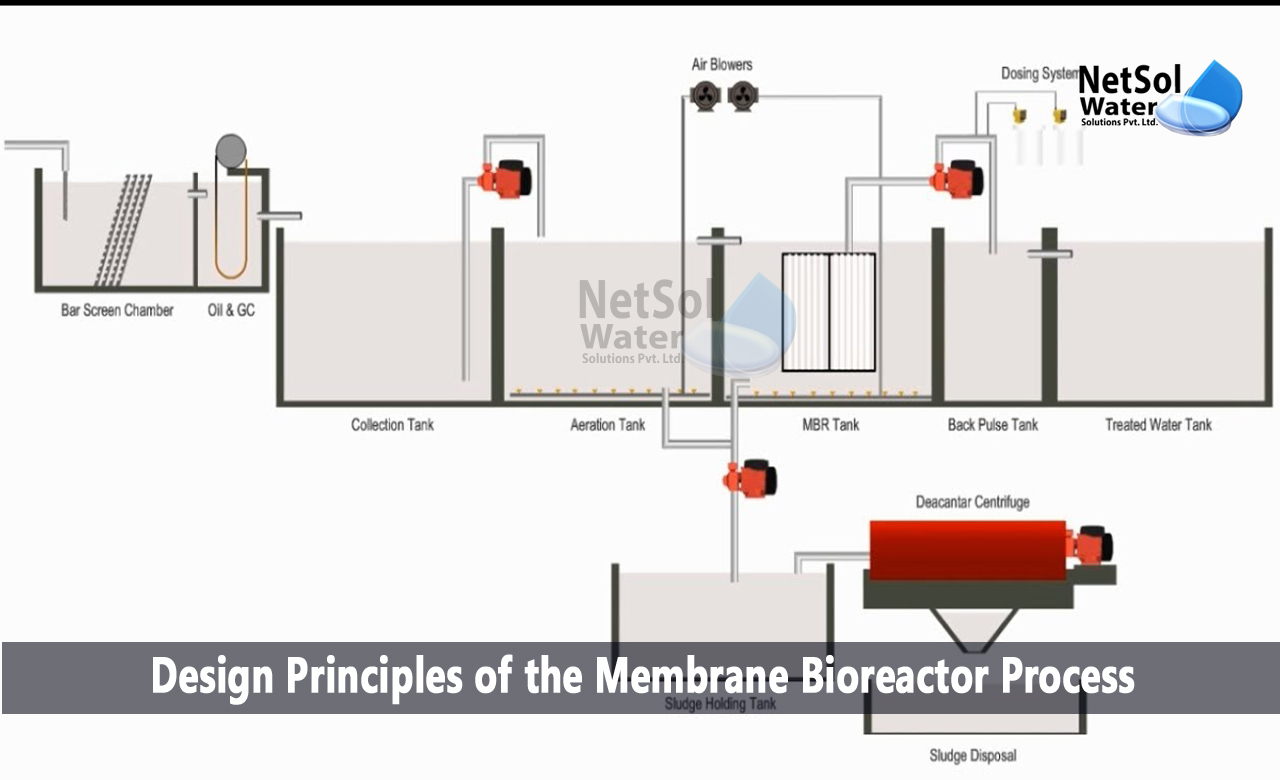How Membrane Bioreactor Can Help Meet Stringent Environmental Regulations
Wiki Article
How Membrane Layer Bioreactors Are Transforming Water Purification Equipments
The development of membrane layer bioreactors (MBRs) represents a considerable development in the area of water filtration, merging organic therapy processes with advanced membrane layer filtration innovations. This combination not only boosts the quality of treated effluent however additionally addresses city room restraints, making MBRs especially appropriate for largely populated areas. As worldwide water shortage heightens, the role of MBRs in helping with safe and clean water reuse and lasting water administration comes to be increasingly essential. The ramifications of this modern technology expand beyond performance-- what chances and obstacles lie in advance for its widespread implementation?Summary of Membrane Bioreactors
Membrane layer bioreactors (MBRs) represent a substantial innovation in water purification modern technology, as they integrate organic therapy procedures with membrane purification. This combination enhances the effectiveness of wastewater treatment by utilizing microbes to degrade organic pollutants while concurrently utilizing semi-permeable membrane layers to different treated water from put on hold solids and pathogens.The MBR system commonly contains a biological activator where the microbial populace metabolizes impurities, followed by a membrane filtering device that preserves biomass and permits just clean water to travel through. This double capability results in greater effluent top quality contrasted to conventional therapy methods. MBRs can be operated in both set and continuous circulation modes, providing versatility in style and application.
They likewise make it possible for the recovery of water for reuse, thus adding to water sustainability campaigns. In general, MBRs are at the leading edge of improving water therapy effectiveness and quality, showcasing the capacity for ingenious solutions in ecological administration.
Benefits of MBR Technology
The integration of biological therapy with membrane layer purification uses various advantages for water filtration processes. Among the primary advantages of Membrane layer Bioreactor (MBR) innovation is its ability to effectively get rid of both organic and inorganic impurities, leading to top notch effluent. The membranes function as a physical barrier, protecting against put on hold solids and virus from passing through, which improves the overall safety and reliability of treated water.In addition, MBR systems need a smaller impact compared to traditional therapy techniques, enabling a lot more effective room utilization. This portable design is especially advantageous in urban settings where land is limited. MBRs additionally demonstrate functional adaptability, suiting varying influent qualities and circulation prices without substantial efficiency destruction.
Additionally, the process offers boosted nutrient removal abilities, especially for nitrogen and phosphorus, which are vital for avoiding eutrophication in receiving waters. The minimized sludge production related to MBR innovation also equates to lower disposal prices, making it an economical service in the lengthy run - Membrane Bioreactor. Generally, the benefits of MBR innovation position it as a leading option for innovative and sustainable water filtration systems, addressing both ecological and financial issues
Applications in Water Filtration
Applications of Membrane Bioreactor (MBR) modern technology in water purification are impactful and varied, addressing different therapy needs across several sectors. MBRs successfully combine biological therapy processes with membrane layer filtering, making them ideal for metropolitan wastewater treatment, industrial effluent administration, and also potable water reuse efforts.In metropolitan setups, MBRs are increasingly employed to improve the quality of treated wastewater, permitting compliance with rigid discharge guidelines and promoting her comment is here the recycling of water for watering and non-potable usages. Their portable layout additionally makes them ideal for city settings where room is restricted.
Industrially, MBR modern technology is made use of to deal with process water and wastewater, especially in markets such as food and beverage, pharmaceuticals, and textiles. By effectively removing impurities and put on hold solids, MBRs aid sectors decrease ecological influences while recouping useful sources from wastewater streams.
In Addition, MBRs are obtaining grip in decentralized water therapy applications, where small systems can be deployed in remote areas or developing areas. This flexibility allows neighborhoods to accomplish sustainable water monitoring remedies, boosting accessibility to tidy water while lowering dependence on standard treatment methods.
Instance Research Studies and Success Stories

In one more example, a fabric manufacturing center in Bangladesh embraced MBR innovation to resolve its wastewater difficulties. The system reduced chemical oxygen need (COD) levels from 1,200 mg/L to much less than 100 mg/L, thus fulfilling regulatory criteria and considerably decreasing environmental influence.
The University of Cape Community's MBR installation has actually proven efficient in dealing with greywater for non-potable reuse on campus. This task not only saves potable water however additionally acts as an instructional model for sustainable techniques.
Furthermore, a fish and shellfish handling plant in Norway utilized MBR innovation to deal with effluents containing high levels of raw material, attaining over 90% pollutant elimination. These study underscore MBR modern technology's flexibility and its essential function in boosting water quality across varied applications.
Future of Water Therapy Solutions
As international water scarcity and contamination difficulties escalate, innovative water treatment services are ending up being significantly essential to guarantee sustainable access to clean water. The future of water therapy hinges on the assimilation of innovative modern technologies that boost the performance and effectiveness of purification processes. Membrane bioreactors (MBRs) go to the forefront of this evolution, combining biological therapy with membrane layer purification to generate high-quality effluent suitable for various applications.
Arising patterns such as resource recovery from wastewater, including nutrients and power, will certainly additionally transform treatment centers right into environment-friendly hubs. Additionally, advancements in nanotechnology and membrane layer products promise boosted efficiency and durability of filtration systems.

Final Thought
To conclude, membrane layer bioreactors represent a substantial improvement in water purification modern technologies, efficiently incorporating biological therapy with sophisticated membrane layer filtering. The numerous benefits, including enhanced effluent quality and minimized spatial requirements, make MBRs especially ideal for metropolitan Get More Information applications. Their duty in drinkable water reuse and lasting water management highlights their value in addressing worldwide water scarcity difficulties. Proceeded research and advancement will certainly further improve the efficiency and adoption of MBR innovation, making certain a resilient future for water treatment remedies.The appearance of membrane bioreactors (MBRs) represents a significant development in the area of water filtration, combining organic therapy procedures with innovative membrane layer purification modern technologies. As international water scarcity magnifies, the function of MBRs in helping with drinkable water reuse and sustainable water administration ends up being progressively vital. They likewise allow the healing of water for reuse, thus contributing to water sustainability initiatives.As global water deficiency and air pollution obstacles increase, cutting-edge water treatment services are becoming increasingly essential to ensure lasting accessibility to clean water. Their role in drinkable water reuse and lasting water administration highlights their value in resolving global water scarcity difficulties.
Report this wiki page